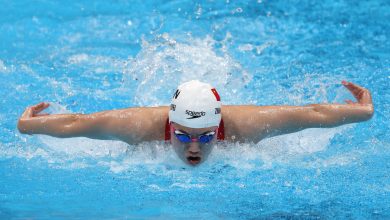Once Highway 1 stabilized at Rocky Creek, traffic can return to Big Sur

SALINAS – Work on the Rocky Creek exit from Highway 1 continues to focus on stabilizing the edge of the roadway, as once that is completed, a temporary signal system will be installed, opening the roadway to unrestricted traffic under one-way traffic control. and ensuring a vital flow of visitors and business to the Big Sur region.
The date when the edge stabilization work will be completed is expected to be determined later this week, according to Caltrans.
But with rain forecast for Saturday, Caltrans will suspend twice-daily convoys to and from the Big Sur area for residents and essential workers only. This information was made available during Monterey County’s press briefing Wednesday.
RELATED: Big Sur Marathon: Course changes approved, race set for April 28
“The final convoys will continue from 7 a.m. to 5 p.m. Wednesday, Thursday and Friday, but we are canceling Saturday convoys,” said Kevin Drabinski, Caltrans District 5 spokesman. “Convoys are expected to resume at 7 a.m. Sunday, but we will wait until we have an update from the National Weather Service this Friday morning to confirm the feasibility of resuming convoys on Sunday.”
Work on the skid that took place on March 30 includes Caltrans completing vital geotechnical assessments that allowed convoy passage and implementing a traffic management system for the corridor, including signage advising of closures on Highway 1.
“In the northbound shoulder area, we went in and created a little extra space,” Drabinski explained. “We improved the drainage on the northbound shoulder and also widened the shoulder to give the northbound lane a little more room.”
K-rail, the concrete barriers placed along the center line to help channel the passage of convoys, have been installed. Caltrans also developed and completed design and construction details for roadway edge stabilization.
This has been the goal since day one. Develop a design and finalize construction details, Drabinski said. Caltrans was now able to hire a contractor who mobilized to the site.
“We hope to release an estimate later this week of when the edge stabilization works will be completed, which will be an important milestone for everyone,” he stressed.
Work by subcontracted crews began Tuesday with the drilling, installation and grouting of 25-foot vertical rock dowels across the southbound lane toward the west edge of the roadway roadway.
Drabinski said this is the first step in stabilizing the curb and said Caltrans should have equipment on site by Thursday that will allow for the next phase of stabilization.
“It’s a little more adventurous work where they’re going to repeat drilling these rebar dowels essentially an inch and a quarter horizontally, thus extending over the edge of the roadway and asking “Then they will install reinforced shotcrete on the vertical face of the repair. Hold on to the edge and drill will take a little longer than vertical drilling directly into the roadway.
Zeke Dellamas, Caltrans emergency manager, said shotcrete is pulverized concrete, applied manually by a worker from a crane, that sticks to the vertical face of the slide. It reinforces and connects to different bolts that have been applied horizontally to help distribute the load on the anchor bolts used in the stabilization effort.
“Until we are able to stabilize the roadside, we will continue to use convoys to move local residents and essential workers only through the area,” Drabinski said. “Once the roadside is stabilized, crews will install a temporary signal system and open Highway 1 to unrestricted traffic under one-way traffic control. We hope to have an estimate of when edge stabilization will be completed later this week.
Dellamas said Caltrans is also studying what the final repair at the slip-out would look like. He described the repair as a viaduct, a half-width bridge, but more details will be presented once they are determined and finalized.
A viaduct is a bridge generally supported by arches which allows a road to be crossed over an open space.
Caltrans estimates the completed work to repair the Rocky Creek slide is worth $25 million.
California Highway Patrol spokeswoman Jessica Madueno said about 500 to 600 vehicles were in the convoys daily, with CHP officers checking each vehicle. So about 50 vehicles a day attempt to travel south on Highway 1 toward the Los Angeles or Santa Barbara areas and are turned away. Convoys are for residents and essential workers only and are limited to travel times of 7 a.m. and 5 p.m.
Kirk Gafill, president of the Big Sur Chamber of Commerce, is grateful for the convoy time change that better suits Big Sur businesses and workers. But with almost two weeks of permanent closure of Highway 1, the impact is becoming more and more severe. His “big ask” of Caltrans is to determine when the road will be stabilized and provide access to and from Big Sur for businesses and individuals.
California Daily Newspapers












